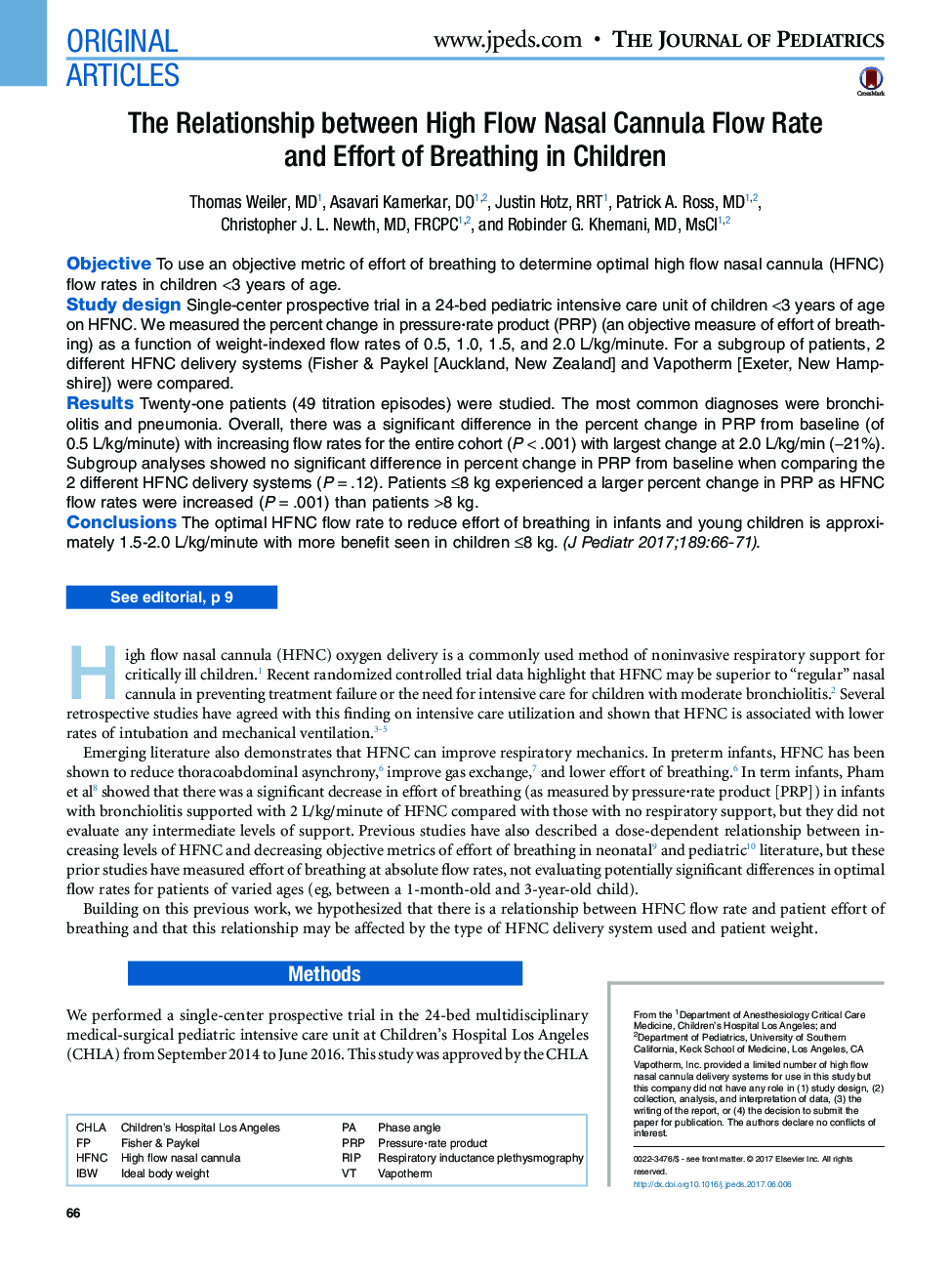| کد مقاله | کد نشریه | سال انتشار | مقاله انگلیسی | نسخه تمام متن |
|---|---|---|---|---|
| 5718883 | 1607409 | 2017 | 9 صفحه PDF | دانلود رایگان |
ObjectiveTo use an objective metric of effort of breathing to determine optimal high flow nasal cannula (HFNC) flow rates in children <3 years of age.Study designSingle-center prospective trial in a 24-bed pediatric intensive care unit of children <3 years of age on HFNC. We measured the percent change in pressureârate product (PRP) (an objective measure of effort of breathing) as a function of weight-indexed flow rates of 0.5, 1.0, 1.5, and 2.0âL/kg/minute. For a subgroup of patients, 2 different HFNC delivery systems (Fisher & Paykel [Auckland, New Zealand] and Vapotherm [Exeter, New Hampshire]) were compared.ResultsTwenty-one patients (49 titration episodes) were studied. The most common diagnoses were bronchiolitis and pneumonia. Overall, there was a significant difference in the percent change in PRP from baseline (of 0.5âL/kg/minute) with increasing flow rates for the entire cohort (Pâ<â.001) with largest change at 2.0âL/kg/min (â21%). Subgroup analyses showed no significant difference in percent change in PRP from baseline when comparing the 2 different HFNC delivery systems (Pâ=â.12). Patients â¤8âkg experienced a larger percent change in PRP as HFNC flow rates were increased (Pâ=â.001) than patients >8âkg.ConclusionsThe optimal HFNC flow rate to reduce effort of breathing in infants and young children is approximately 1.5-2.0âL/kg/minute with more benefit seen in childrenââ¤8âkg.
Journal: The Journal of Pediatrics - Volume 189, October 2017, Pages 66-71.e3
